Arguably, a smartphone is the most important piece of tech most of us own, considering how integrated it is into our daily lives. However, they are also capable picture takers, and it is in this spirit that I look over the new iPhone 17 Pro and Pro Max.
To be clear, I’m not going to review the phone as a phone, but rather as a picture-taking tool. I’ll also be focusing on the larger $1,199 Pro Max model, although the image-making specs are identical for the $1,099 iPhone 17 Pro.
Apple did release a standard iPhone 17 and its brand-new ultra-thin Air design, however, the cameras on the standard iPhone 17 are largely borrowed from last year’s models, and the Air, in particular, only features the main camera and selfie camera from the iPhone 17.
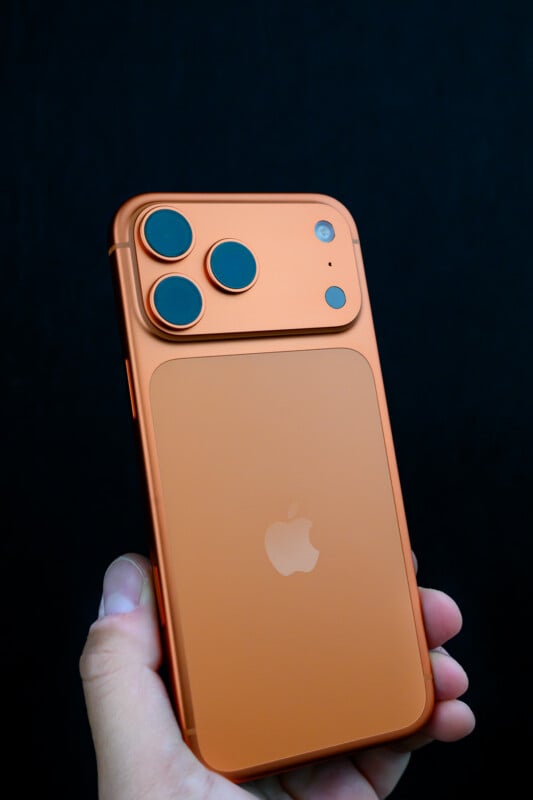
iPhone 17 Pro Max Review: How It Handles
As usual, I think most photographers and videographers will appreciate the benefits that the Pro models support, so I focus my efforts on these higher-end models. I want to mention, though, that Apple has some important updates that are shared across the entire line.
The first thing you will notice about the iPhone 17 Pro series is the departure from classic Apple styling. This is the first phone Apple has created with a solid unibody aluminum chassis. The new design gives off a more sporty and tech-forward look, although this might not be to everyone’s taste. The solid housing does feature a large and raised camera plateau, which provides plenty of space for the Apple silicon, three cameras, and the antenna. This also makes room for a larger battery and, we are told, for better heat dissipation.

Another design first for Apple is the inclusion of a new vapor chamber, which supposedly will better transfer heat from the battery and processor to the aluminum body and then out of the device. Although last year’s iPhone 16 Pro was made out of titanium, the new uni-body aluminum housing will be better as a heatsink. I never had an issue with overheating when taking photos on the iPhone 16 Pro, but video recording and gaming could cause it. More on that in the video section.
Apple has improved its screen technology across the board in two important ways. We now get the brightest screens ever offered by Apple, with 3,000 nits of peak brightness, which vastly improves over last year’s 2,000-nit screens. Both the display and lenses are now coated with a new Ceramic Shield 2 coating, which promises even more ruggedness than previously seen, although time will tell how substantial an upgrade this is.

Handling is virtually identical to the iPhone 16 Pro series, with the return of the camera control button. I personally do not use this setup to control things like tones and exposure, but I do still use it as a shutter button for the camera, and I certainly appreciate the extra buttons in general to customize the phone to my liking. The overall weight of the phone is roughly the same as the iPhone 16 Pro Max at 9.7 ounces (277 grams), and the screen size is still a 6.3 or 6.9-inch display for the Pro and Pro Max phones, respectively.
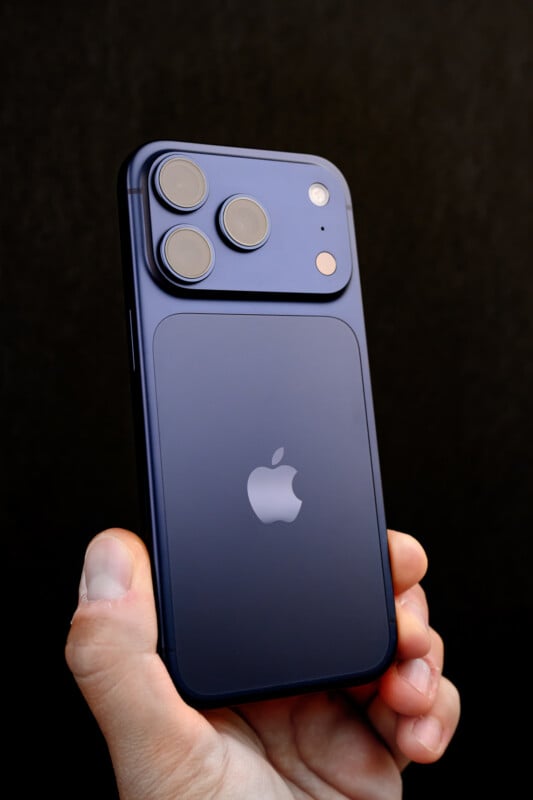
Both phones have the latest A19 Pro processor, which should promise to enhance the photo-taking experience. I haven’t noticed much change as far as shooting speeds, response time, or image quality goes. However, there are some meaningful changes that I will touch on shortly. Battery life is the best we have seen so far, with a promised almost 40 hours of video playback possible on the iPhone 17 Pro Max. The phone will now charge slightly faster, drawing up to 40 watts of power for charging, with more wattage possible if power-hungry apps are running.
iPhone 17 Pro Max Review: How It Shoots
The best way to handle this next section is to go camera by camera, and I’m going to start with the camera that I usually pay the least attention to. All four iPhones this year feature a brand new front-facing camera that borrows the Center Stage name from Apple’s MacBook and iMac computer lines. This new camera features a 24-megapixel square sensor, which allows for the ultra-convenient ability to shoot either vertical or horizontal photos and video without having to rotate the device. It can also automatically frame tighter if you are the only subject in the frame or go wider automatically if the phone detects other people coming into the frame, just as it does on Apple’s computer webcams.
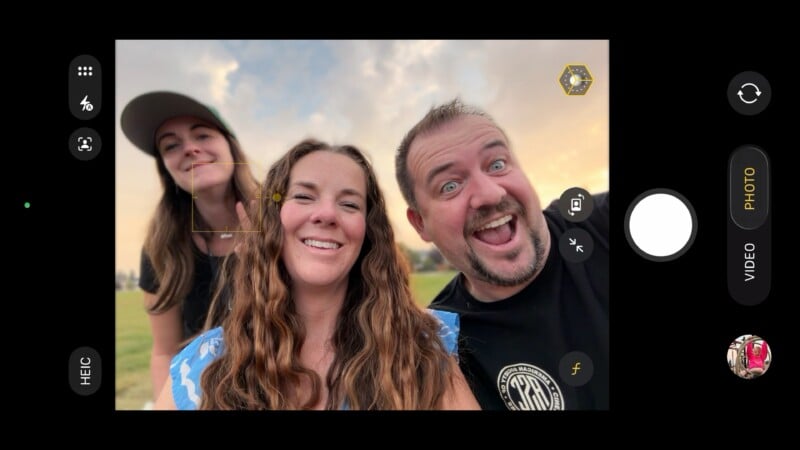
You can manually choose a wider or tighter frame as well, with the wider frame giving 18-megapixel output and the tighter frame providing around 7 megapixels. Regardless, the resolution will be acceptable for most social media situations. I found this feature to be very simple to use, and it should prove to be an invaluable setup for creators who rely on selfie-style presentations and casual users who want better-framed selfies.

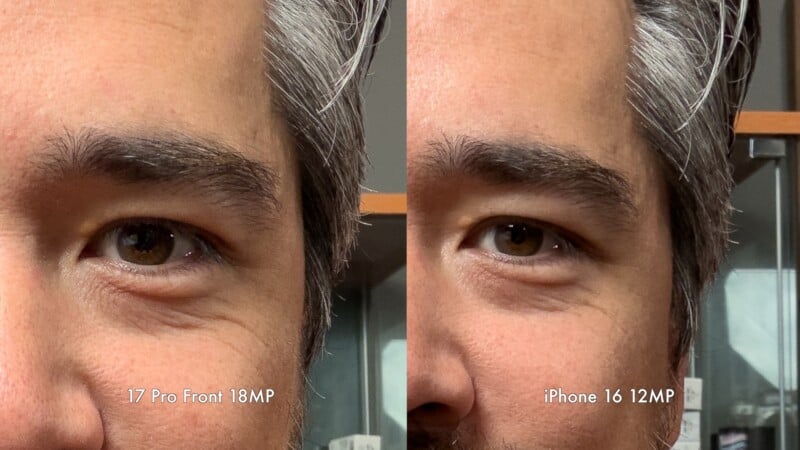
The ultra-wide camera is the exact same 13mm f/2.2 full-frame equivalent field of view that we saw on the iPhone 16 Pro phones. I always liked the quality of this 48-megapixel sensor and the macro capabilities it offered. However, I especially like the fact that I can now shoot 24-megapixel images, instead of the 12-megapixel limit imposed on last year’s phones.


The main camera also returns from the iPhone 16 Pro series, featuring a 48-megapixel f/1.6 camera assembly providing a 26mm full-frame equivalent field of view. No new surprises here: the image quality looks identical, which is not a bad thing. I was happy with the results out of the main camera last year, and the sensor reads out quickly, too.
The real big change is going to be the 5x camera from the iPhone 16 Pro, giving way to a 4x lens this time around. The maximum aperture stays the same at f/2.8, but the sensor is about 56% bigger than before, and the sensor moves up to a 48-megapixel quad Bayer chip. This means that all three cameras now offer the option to capture 48-megapixel RAW files and 24-megapixel HEIFs. The 4x lens gives a 100mm full-frame look to shots and is a classic choice for head and shoulder portraits.
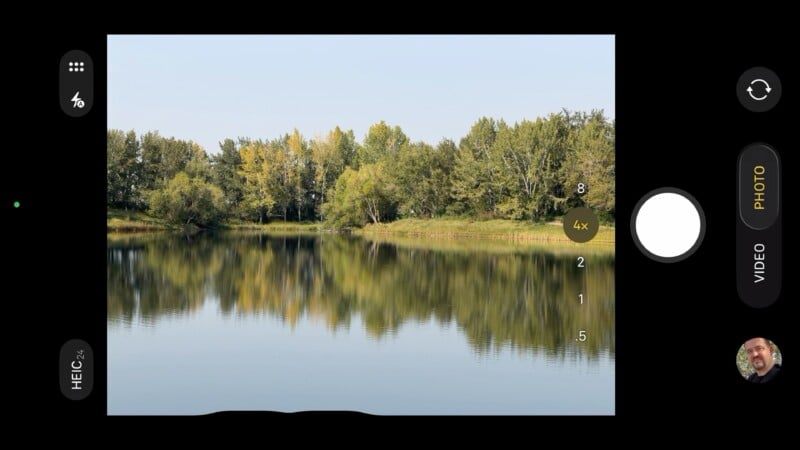
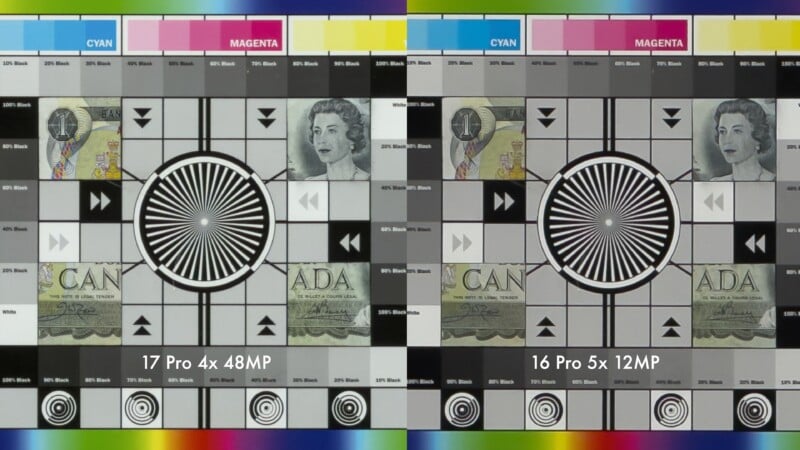


The 5x telephoto in the iPhone 16 Pro phones was always the weakest link in the Apple camera bundle, and I’m happy to see it go away. The 4x lens proves to offer way more resolution than the older 5x camera and even surpasses it if you crop to an equivalent 5x field of view. The resolution advantage is remarkable and now gives the iPhone 17 Pro a strong lineup of cameras without exception.
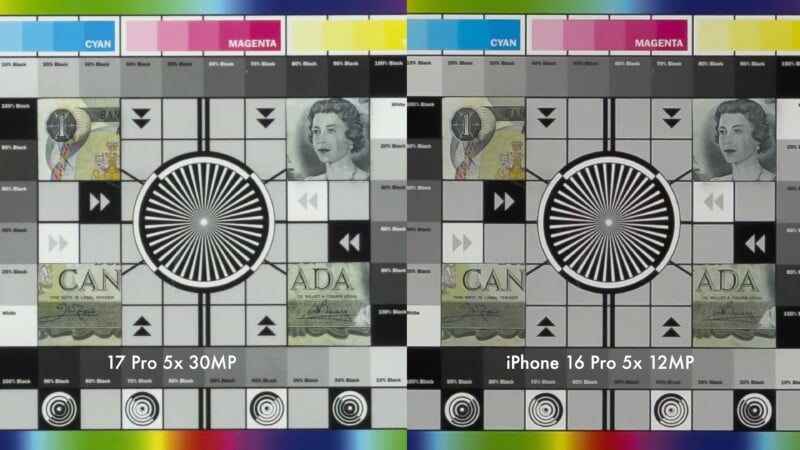


We see the return of the 28mm and 35mm fusion cameras, which give a 24-megapixel output and acceptable image quality. However, I often find myself using the 2x lens quite often, and the iPhone 17 Pro now features an 8x lens as well. Clearly, these are not actual lenses but rather tight crops from the existing cameras in the phone. The output is limited to 12 megapixels, but Apple engineers say that they have implemented a new pipeline for the 12-megapixel images and that the image quality is noticeably better. Honestly, I thought this was salesmen’s speak, but upon closer inspection, the results are definitely cleaner and sharper than the older phone system.
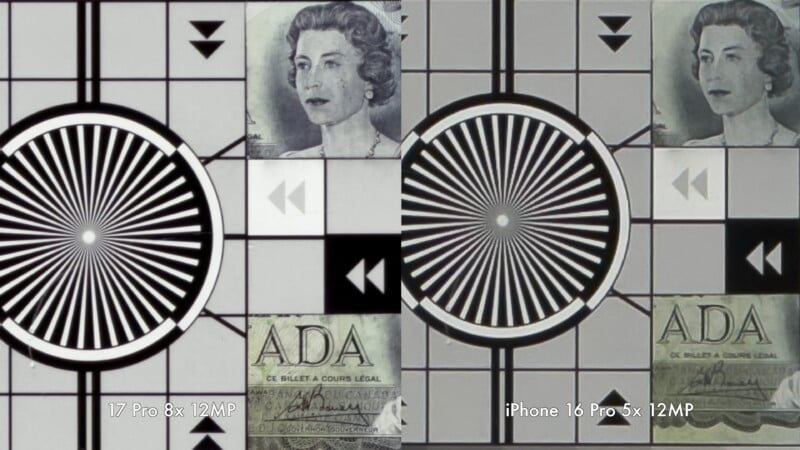
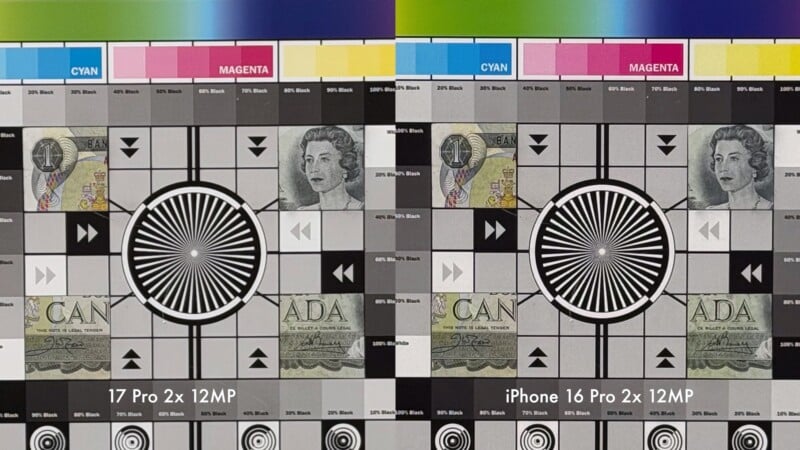


Apple has made a concerted effort to improve the results over the lackluster 5x lens and to enhance image quality with its fusion cameras and cropped lenses as well. The 8x lens option may be a crop rather than a camera, but it gives only slightly worse image quality than the optical 5x lens from last year, so versatility is really being improved here. I did not notice much difference when it came to low-light image quality or portrait mode on the phone, but overall, the iPhone 17 Pro has noticeable improvements without resorting to intensive cloud-based AI processing.
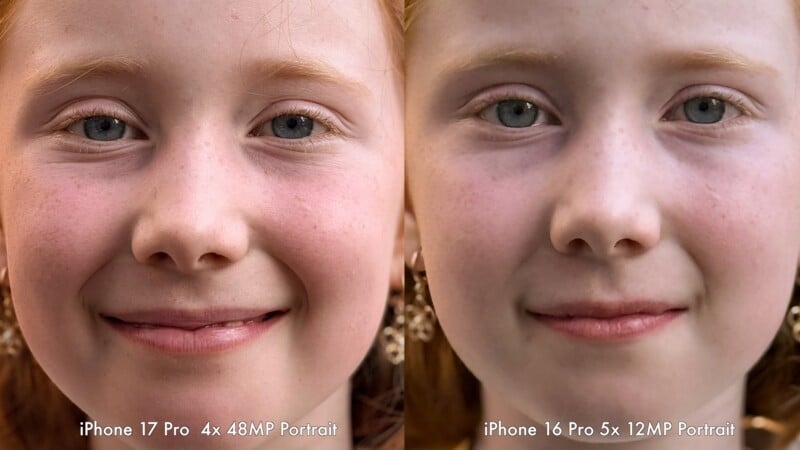



iPhone 17 Pro Max Review: Video Capabilities
Video section by Jordan Drake
Of the major phone brands available in North America, Apple has been well in the lead when it comes to video capability for years. We frequently use iPhone footage in our PetaPixel videos, and it often cuts in seamlessly with footage from more advanced video cameras. This year, the biggest advancement for most users will be the aforementioned 4x camera. Image quality in video is significantly better than with the old 5x camera, and I was also very impressed with the image stabilization, which allows you to keep the frame steady while recording, but also pan smoothly with a moving subject.

The upgrades to the front-facing selfie camera are also apparent in video, but are used in a different way than in photo mode. The video clip will not automatically reframe to include other faces, but the iPhone 17 series does gain the ability to record video from both the front and rear cameras simultaneously. You can choose which corner the picture-in-picture looking selfie footage is displayed, but make sure it’s not obscuring your main subject, as the location of the selfie video is baked into your footage and cannot be adjusted afterwards. The new selfie camera’s larger square sensor does lead to substantially improved video stabilization as well.
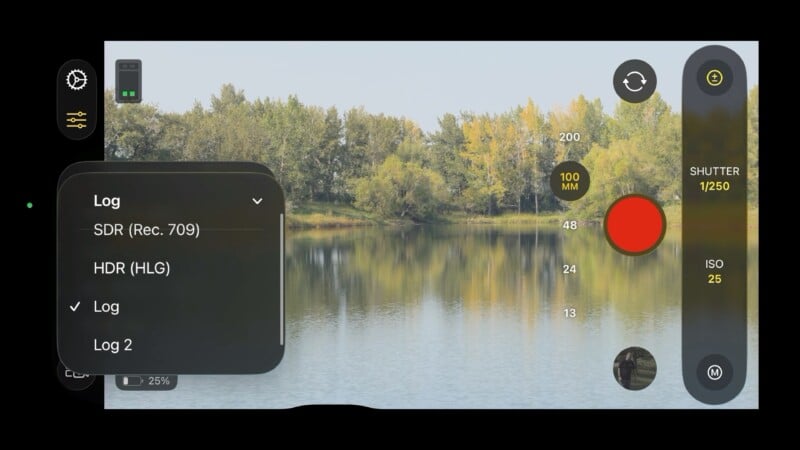
It is worth pointing out that the main camera with its fast scanning sensor is still the only camera capable of capturing 4K/120p footage. This is a little disappointing as the 4x lens is the perfect focal length for capturing slow motion. 1080P/120p is still available on the other cameras, though.
The biggest video feature announced with the iPhone 17 Pro series is the inclusion of ProRes RAW recording. This is a well-established video format that allows maximum flexibility with white balance, exposure, and noise reduction in post. It can only be recorded to an external drive with either Final Cut Camera or Blackmagic Camera apps, which is odd, as the data rates are similar to the ProRes 422 HQ that the phones have been able to record internally for years in the native app.
Excitingly, when shooting ProRes RAW, you will have the ability to record in Open Gate, at a higher resolution and using the entire 4:3 aspect ratio of the sensors. This allows you to reframe your shots in post, most commonly for vertical and landscape with the same shot.
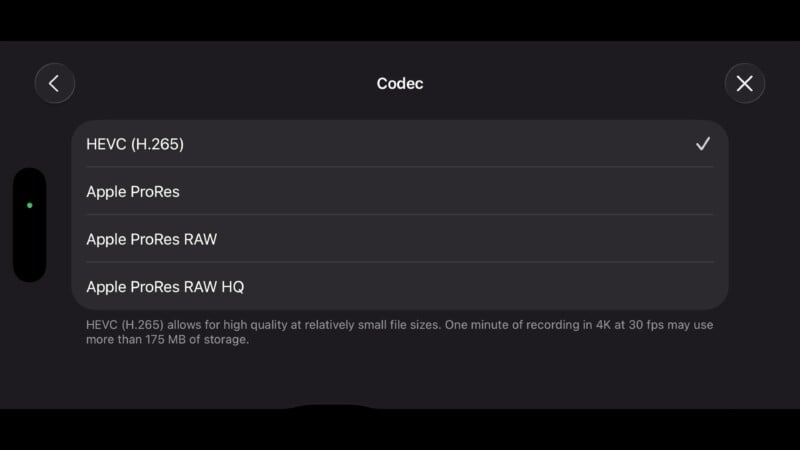
Unfortunately, while the ProRes files can be used in Final Cut Pro right now, the ability to control white balance and ISO (exposure) from the RAW video panel is currently not active. However, I expect this functionality shortly after the new iPhones hit the market. My major concern is that, unlike the massive editing flexibility advantage of shooting RAW in photography, most of the capabilities of RAW video are also found when shooting the excellent 10-bit Log footage iPhones have offered for the last couple of years. Certainly, some large productions will want to capture the most flexible footage possible, but for the majority of even professional users, I recommend sticking with Log recording, as the small benefits of ProRes RAW will be outweighed by the extra time required to properly finesse the image.
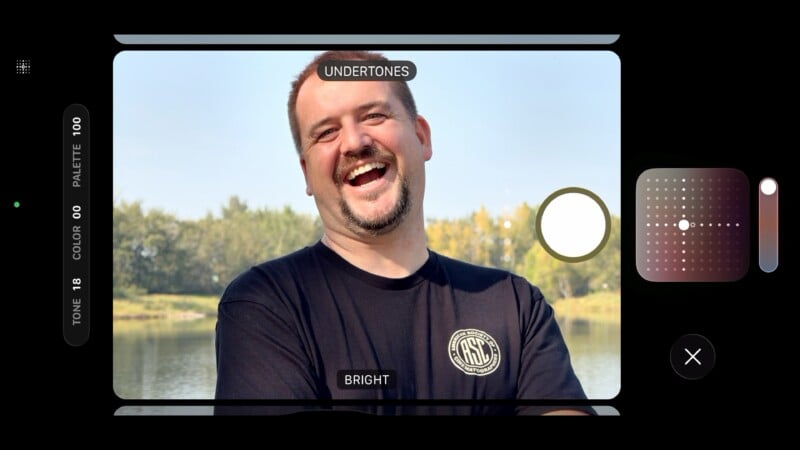
Speaking of the Log video, the iPhone 17 Pro introduces Apple Log 2 in both Final Cut Camera and Blackmagic Camera. When comparing this to the original Apple Log, I found that highlights clipped at the same point, but Log 2 retained a bit more information in the deepest shadows. Unfortunately, this is also the portion of the image with the most noise, so I don’t find usable dynamic range to be substantially improved. I hope this new Log is a sign of things to come for future cameras capable of recording a wider dynamic range.
My biggest request of Apple moving forward is to allow more efficient Log recording in the native app. I use Final Cut Camera constantly to capture very flexible Log footage with small file sizes, but doing so means I lose access to some useful features of the native app, like Apple’s audio filters and the aforementioned ability to record using both cameras simultaneously. Hopefully, this functionality is added with a software update, rather than requiring the purchase of next year’s model.

If it seems like I’m negative regarding the video capabilities of the iPhone, it’s that aside from the improvements brought on by the new cameras, the rest of the updates will be useful to a very small group of professionals. That said, Apple has such a leg up on video performance that it didn’t need to introduce a major new feature. For the time being, the iPhone is still the king of smartphone video, and I sure do love that new 4x camera.
One last area worth addressing is overheating performance, since Apple made such a big deal about the change of the chassis to a unibody design and the addition of the vapor chamber. We wanted to see if there was a noticeable effect on video capture. When the iPhone 16 or 17 series gets too hot, the screen will dim during video capture, which is a great indication of when the phone is getting too warm, so that was my benchmark.
I tested the iPhone 17 Pro and the iPhone 16 Pro against each other in a variety of situations and ambient temperatures, and my results were inconsistent. Sometimes the iPhone 16 Pro dimmed first, sometimes the iPhone 17 Pro dimmed first. In the most controlled scenario I could create (indoors with moderate ambient temperature, phones disconnected from the internet, all apps closed except the video app), both the iPhone 16 Pro and the iPhone 17 Pro continuously recorded for an hour and a half, and neither dimmed.
What we can take from this is that despite a change to the body design of the iPhone 17 that would normally trap more heat, Apple’s changes to the cooling (the aforementioned vapor chamber included) have resulted in no difference in recording performance versus last year’s model. You could argue this is a good or bad thing, but since overheating is rarely an issue for me with the iPhone 16, I don’t see it as an issue for the iPhone 17 either.
iPhone 17 Pro Max Review: Easily the Best
 Apple has delivered us a phone that builds on the hardware that was already excellent while addressing the weaknesses present. There is something to enjoy creatively for almost everyone in this phone. Creators and influencers will love the new selfie camera. Photographers now get high-resolution cameras in a wide range of focal lengths, and a usable 8x digital camera for those who need a little extra reach.
Apple has delivered us a phone that builds on the hardware that was already excellent while addressing the weaknesses present. There is something to enjoy creatively for almost everyone in this phone. Creators and influencers will love the new selfie camera. Photographers now get high-resolution cameras in a wide range of focal lengths, and a usable 8x digital camera for those who need a little extra reach.
Videographers still have the best cinematic smartphone on the market with even more professional features added. The $1,199 Apple iPhone 17 Pro Max doesn’t break any major new ground, but it is the company’s most comprehensive and complete creative smartphone to date.
Are There Alternatives?
In North America, we will still be largely looking at the other two big brands. Both the Samsung S25 Ultra and Google Pixel 10 Pro feature good hardware with fantastic-looking portrait modes and decent low-light image quality. However, both companies are also committed to a heavy dose of cloud-based AI alterations to enhance the photo-taking experience. While some of these features are legitimately useful, many photographers will be apprehensive of the generative image-making involved.
Should You Buy It?
Yes. As is the case with all phones, if you have last year’s model, there are fewer reasons to upgrade. However, the iPhone 17 Pro series represents the most complete and capable all-around product in a long time, thanks to many meaningful hardware changes — a welcome respite after the last two years of software-focused updates, especially on the Android side.

